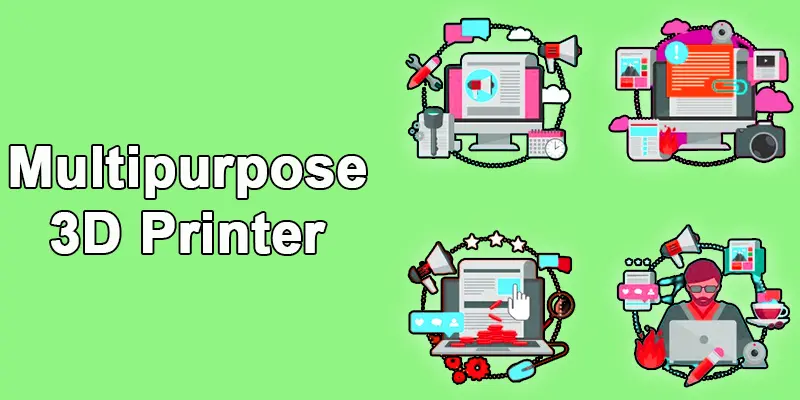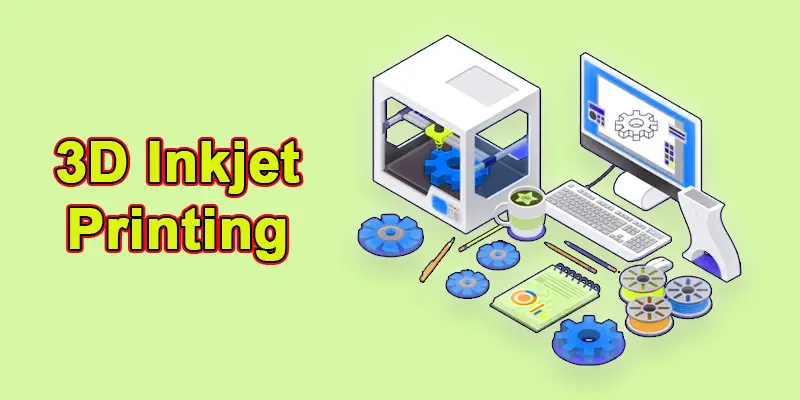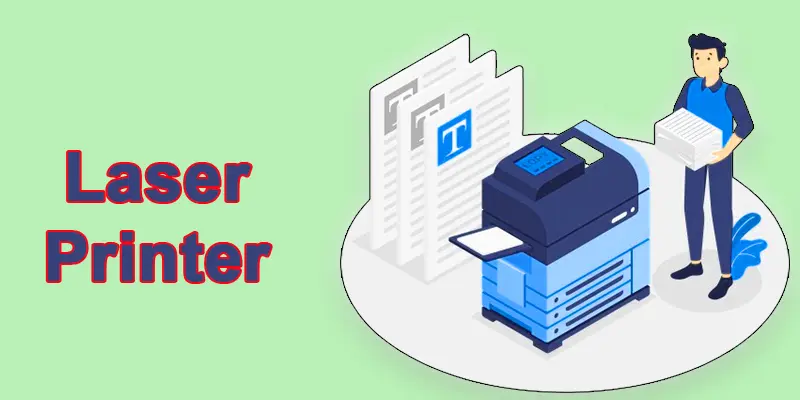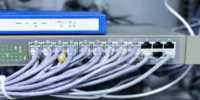What is 3D Printing? How Does it Work? Types of 3D Printing
Published: 2 Apr 2024
What is 3D Printing?
A 3D printer is an essential device that creates a three-dimensional object layer by layer from a digital design, unlike common manufacturing techniques, which entail shaping, cutting, or moulding materials. 3D Printing uses a digital file as a blueprint to create objects. Producing complex things using traditional methods would be challenging or impossible, but the 3D printer approach makes it possible.
3D Printer Types
There are numerous types of 3D printers, and they all use various materials and technologies like Fused Deposition Modeling, Stereolithography 3D Printers, and more.
3D Printer Using Fused Deposition Modeling (FDM)
These printers are famous for being easily accessible and straightforward to use. Many people believe FDM printers to be user-friendly. To construct items, they heat and kick out filament layer by layer.
Stereolithography (SLA) 3D Printer
Stereolithography (SLA) is a 3D printing method well-known for its extraordinary accuracy and ability to produce small details. SLA printers use a photosensitive liquid resin that solidifies in response to UV light. Despite their precision, modern SLA printers are designed with user-friendly interfaces and workflows.
3D Printer Using Light Processing Digitally (DLP)
Like an SLA printer, a digital light processing (DLP) 3D Printer cures the resin using a digital light projector. 3D printers with digital light processing (DLP) provide quick and high-resolution Printing, making them suitable for applications requiring fine details and smooth surface finishes, such as jewellery making, dental applications, and prototyping.

3D Printer Using Selective Laser Sintering (SLS)
Selective Laser Sintering (SLS) is an additive manufacturing technique that uses a powerful laser to fuse powdered materials into solid 3D objects selectively. While SLS printers are traditionally used in industrial settings, advancements have led to more user-friendly desktop SLS printers. Lasers are used to sinter powdered materials, such as nylon, into solid objects.
Binder Jetting on a 3D printer
A liquid binding agent is injected selectively over a powder bed using an additive manufacturing technique called binder jetting. These make functional prototypes, end-use parts, and manufacturing components across various industries, particularly for applications prioritizing speed and material versatility over high resolution and surface quality.
3D Printer Made of Metal
Metal additive manufacturing, sometimes called metal 3D printing, allows for the direct production of metal items from digital blueprints.
3D Printer made of Ceramic
Direct production of ceramic things from digital designs is possible using ceramic additive manufacturing, sometimes called ceramic 3D Printing. 3D Printing of ceramics is still in its infancy and is finding applications in various industries, such as electronics, architecture, healthcare, and aerospace.
Multipurpose 3D Printer
A multi-material 3D printer can print items in multiple materials simultaneously or consecutively. It is a vital tool for a wide range of applications in numerous industries because it offers substantial advantages in terms of versatility, complexity, customization, and efficiency.

Conclusion
3D Printing opens up countless design, manufacturing, and innovation opportunities. People and companies can select the technology that best fits their needs and requirements from various 3D printer models. Whether using FDM, SLA, SLS, DLP, or another type of Printer. 3D Printing can lead to new opportunities for experimentation and progress in the world of creative potential.
FAQS (Frequently Asked Questions)
What is 3d printer technology?
A 3D printer machine is a device that uses 3D printing technology to create three-dimensional objects from digital designs or models
What is 3d printer resin made off?
A 3D printer resin is made of various photopolymer materials that harden when exposed to ultraviolet light. Different resins have different properties and are used for multiple applications.
10 types of 3d printer?
Ten types of 3D printers include FDM, SLA, DLP, SLS, Binder Jetting, Metal 3D printers, Ceramic 3D printers, Multi-material 3D printers, Continuous Liquid Interface Production (CLIP), and Selective Deposition Lamination (SDL) printers.
3D Printing Buildings: What is it?
Using large-scale 3D printers and materials like concrete or composite materials, 3D printing building entails creating structures, homes, or buildings layer by layer.
What is the post office of 3D printing?
Through a 3D printing post office, people and companies may submit their 3D design files to a specialist facility, which will be printed and returned to them.

- Be Respectful
- Stay Relevant
- Stay Positive
- True Feedback
- Encourage Discussion
- Avoid Spamming
- No Fake News
- Don't Copy-Paste
- No Personal Attacks

- Be Respectful
- Stay Relevant
- Stay Positive
- True Feedback
- Encourage Discussion
- Avoid Spamming
- No Fake News
- Don't Copy-Paste
- No Personal Attacks





